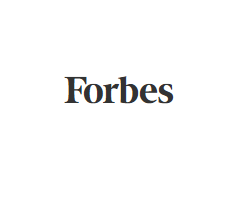Trump Promised A Boost To Coal Industry, Arch And Peabody Are Trying To Make It Happen

By George Schultze
June 21, 2019 - One of President Trump’s signature promises on the campaign trail in 2016 was to help the coal industry bounce back, the opening of more mines and more employment for miners. There’s no doubt that the coal industry in this country has suffered in recent years, with more than 100,000 jobs lost over the last 30 years. And even with the change to rules affecting greenhouse gas emission under the Affordable Clean Energy (ACE) Rule, it’s unlikely that those jobs are ever going to come back. But the coal industry overall can make itself more competitive as the recently announced joint venture agreement between Arch Coal (Ticker: ARCH) and Peabody Energy Corporation (Ticker: BTU) demonstrates.
The proposed deal will combine the two companies’ Powder River Basin and Colorado assets in what the announcement labeled “a highly synergistic joint venture” that is intended to make coal more competitive in the marketplace versus natural gas and renewable energy sources, by reducing production costs below what either company could achieve alone. All told, the joint venture is expected to unlock pre-tax synergies of ~$820 million, with projected 10-year average synergies of ~$120 million per year.
Combining forces makes a lot of sense for these two industry giants – Peabody has the lowest cost position among major Powder River Basin (PRB) producers while Arch has some of the highest-quality coal in the PRB. Together with the two mines mentioned above, the combined Powder River Basin assets represent five of the 10 most productive mines in the United States. In 2018, on a combined basis, the assets shipped 206.0 million tons of coal. The assets are operated by a workforce of approximately 3,300, with combined proven and probable reserves totaling 3.4 billion tons.
Their operations are also highly complementary. For example, Arch’s Black Thunder Mine and the adjacent Peabody North Antelope Rochelle Mine share a property line of more than seven miles which can now be combined into a single, lower-cost complex. Other synergies relate to optimization of mine planning; greater efficiency in deployment of equipment fleet; more efficient procurement and warehousing; and improved utilization of the combined rail load-out system and other rail efficiencies. Obviously, long-term capital requirements will be lower and leveraging of shared services will deliver additional savings.
When the dust settles, Peabody will own two-thirds of the joint venture and Arch one-third, with Peabody serving as operator of the assets and marketer of the resultant coal. The two companies will share profits, capital requirements and cash distributions from the joint venture proportionate to the ownership stakes. Governance will be overseen by a 5-member board with voting right also ties to ownership stakes.
Importantly, the joint venture deal will also allow Arch to focus its efforts more directly on producing and marketing metallurgical coal – the type of coal that’s needed for producing steel. Similarly, Peabody’s participation in this joint venture will help it generate higher returns from its legacy electricity-generating PRB coal while allowing it to remain focused on its more profitable global metallurgical coal business. In contrast to electricity-generating steam coal, the metallurgical coal market has witnessed favorable fundamentals lately. Moreover, future demand for metallurgical coal may be stimulated significantly when and if the US finalizes plans for the rebuilding of its aging infrastructure.
The joint venture deal caps a remarkable turnaround for two companies that each found themselves filing for Chapter 11 protection in 2016 and provides another example of how bankruptcy isn’t always the end of the road for a distressed company. For Arch, restructuring allowed the firm to eliminate over $5.0 billion in liabilities subject to compromise by the time it emerged from bankruptcy in October 2016. Similarly, Peabody emerged from bankruptcy in early 2017 after eliminating nearly $7.0 billion in pre-petition liabilities.
Since then, both firms have generated admirable cash flow trends – Arch produced over $440 million in EBITDA for the 12-months ended March 31, 2019 while Peabody generated over $1.5 billion in the same period. This compares favorably with their total market capitalizations of ~$1.4 billion for Arch and ~$3.1 billion for Peabody. Meantime, both companies saw their annual interest expense drop tremendously as a result of their reorganizing – Arch’s annual interest expense dropped from nearly $400 million to just $13 million today while Peabody’s dropped from nearly $430 million to just $149 million today. As a result, each of these two coal companies has generously rewarded its post-distress common stock holders with increasing dividends and stock buybacks.
We anticipate that their joint venture proposal, once approved, will give each firm more flexibility to continue rewarding shareholders.

